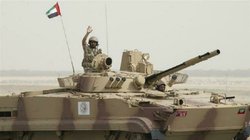 The UAE's Minister of State for Foreign Affairs Anwar Gargash says the Persian Gulf country has been redeploying its forces in Yemen's port city of Hudaydah.
The UAE's Minister of State for Foreign Affairs Anwar Gargash says the Persian Gulf country has been redeploying its forces in Yemen's port city of Hudaydah. RNA - Gargash tweeted on Friday that the redeployment is "the outcome of extensive dialogue" within Saudi Arabia, which has been waging a war on Yemen since March 2015.
Saudi Arabia and the UAE are determined to avoid confrontation with Iran, he said, adding the two Arab allies had agreed on a strategy for the next phase in Yemen.
The remarks came less than a month after the United Arab Emirates announced a “strategic redeployment” from Hudaydah and a more limited retreat elsewhere in Yemen.
A senior UAE official, who was speaking on condition of anonymity, said the country was moving from a "military first" to a "peace first" strategy.
“We do have troop levels that are down for reasons that are strategic in Hudaydah and reasons that are tactical” in other parts of Yemen, he said.
The New York Times reported in July that the UAE had pulled most of its forces from the Yemen “quagmire” in a “face-saving” decision that has deeply upset its Saudi allies.
It quoted Western and Arab diplomats as saying that the Emiratis "are driven mostly by their desire to exit a war whose cost has become too high, even if it means angering their Saudi allies."
On Thursday, the New York Times also revealed that the UAE had had been withdrawing from Yemen because it had come to the conclusion that the war was “unwinnable.”
Saudi Arabia launched the war on Yemen in March 2015 in an attempt to reinstall a former regime and eliminate the Houthi Ansarullah movement, which has been defending the country along with Yemen’s armed forces.
The Western-backed military aggression, coupled with a naval blockade, has killed tens of thousands of Yemenis, destroyed the country’s infrastructure, and led to a massive humanitarian crisis.
The UAE has provided weapons, funding, training to at least 5,000 mercenaries in the bloody war on Yemen.
847/940